Arroz Blanco (or Steamed White Rice) is a side dish of fluffy rice that’s easy to prepare. Whether you are looking to start meal-planning, need a simple side dish to serve with your entrees, or want to make one of the most traditional Puerto Rican recipes, this arroz blanco recipe will be the secret weapon in your culinary arsenal.
*This is an updated post of the original, first published in March 2020. The article has been updated, but the recipe is the same.*
What Is Arroz Blanco?
Arroz blanco means “white rice” in Spanish. Rice is a seed that is primarily consumed as a cereal grain.
There are a wide variety of rice types, such as wild rice, brown rice, Arborio, sushi, short grain, medium grain, and long grain. These are just a few types of rice varieties we can easily find on our grocery store shelves. Rare varieties of rice like emerald jade, forbidden (or black) rice, and even Carolina gold add even more choices besides regular white rice to our daily plates.
Rice is a food source that can bulk up any meal you serve it with or eat on its own. You can stretch recipes like stews, soups, casseroles, and even breakfast foods by stirring in a cup (or two) of cooked rice.
Why Is White Rice So Popular?
Rice is an important dietary staple for many of the world’s cultures. More than half of the world’s population depend on rice for daily caloric intake because it’s inexpensive, accessible, and simple to prepare.
What Do I Need to Make Arroz Blanco?
To make steamed white rice, you need long or extra-long grain white rice, extra virgin olive oil, salt, and water. Spices or seasonings can add flavor or color to a plain pot of arroz blanco, but they aren’t required.
You’ll need a heavy-bottomed pot (a dutch oven works well), a wooden spoon, and a piece of aluminum foil.
Do I Have to Use Long Grain Rice For This Arroz Blanco Recipe?
Arroz Blanco is most often made with long or extra-long grain white rice. Medium grain rice is the most popular type of rice in many Hispanic or Caribbean countries. Mainly because that’s the most widely available variety. You can replace long-grain rice with basmati or jasmine rice without modifying this recipe.
Long or extra-long grain rice is the easiest to prepare since it requires no extra cooking or pre-soaking. You can replace the white rice in this recipe with brown rice, but its firmer texture will require an additional 1/2 cup of water and a longer steaming time. Short-grain or medium-grain rice, because it’s smaller, will require a 1/4 cup less water and a decrease in steaming time to only 15 minutes. Both types of rice benefit from 10 to 15 minutes of pre-soaking, though it’s not a must.
How Do I Avoid Gummy Rice?
Starch causes steamed rice to become gummy and sticky after cooking. Rice is covered in starch that must be rinsed away to avoid this. If the excess starch on the rice isn’t rinsed away, it thickens the cooking water, which causes the rice to become sticky or gummy.
Add the rice to a large mixing bowl and cover it with at least 4 inches of cold water. Don’t rinse the rice in warm or hot water because it contains sediments that make it appear cloudier. Hotter water will also begin prematurely softening rice grains, which may lead to overcooking the rice.
Use your fingers to agitate the water to remove the rice grains’ starch. Carefully strain the water from the rice in the bowl and repeat this rinsing process 2 to 3 more times.
The more you rinse the rice grains, the clearer your water will become, a sign that the rice is free of the starches that cause it to become gummy.
Strain the water from the rice well and set it aside for now.
Can I Still Use The Strained Rice Water?
You can save drained rice water and use it to condition your hair, water your plants, or as a liquid base for soups and stews.
How Do I Avoid Sticky White Rice?
The preparation of this rice is really easy. Heat the extra-virgin olive oil over medium-high heat for 1 minute in a cast aluminum caldero or a heavy bottom pot. You can also use vegetable oil, rendered bacon fat, or lard instead of olive oil.
Add the rinsed and drained rice to the pot once the oil begins to shimmer. Use a large spoon to stir the raw rice into the olive oil and coat the grains while toasting them. Toasting the rice in oil keeps the grains from sticking together as they steam, which guards against sticky rice.
The rice will take on a golden color and stick a little to the bottom of the pot. Scrape the rice with the spoon, then pour in the cold water. Give the rice another stir to incorporate the water into the rice.
How Can I Alter The Flavor Or Color Of Arroz Blanco?
Season the rice with kosher salt after adding the water. I also add a small amount of black pepper to my arroz blanco, but that’s optional.
Here are a few different ways to add more flavor or color to your white rice:
- Sauté a tablespoon of minced garlic or chopped onion with the rice before adding the liquid.
- Turmeric, saffron, or sazón for a beautiful yellow or orange color to white rice.
- Add spice blends like Chicken Seasoning Blend, Mexican Spice Blend, or Middle Eastern Spice Blend to the rice for more creative flavor.
- Steam the white rice with chicken broth, chicken stock, vegetable stock, or beer instead of water to add even more flavor. You can also add a squeeze of fresh lime juice when you fluff the rice to brighten the flavor.
- Add an 8-ounce can of tomato sauce to the total amount of liquid called for in the recipe to create red rice.
Allow the water to come to a rolling boil after you add the salt. Boil the water just until the grains of rice are visible and the excess water is nearly evaporated in the pot.
What Does the Foil Trick Do to Arroz Blanco?
Stir the rice in the pot once more. When you stir the rice in the pot, it will sound like a rustling newspaper. This is an indicator that the water has evaporated in the pot. If a sloshing sound comes from the rice, there’s still too much water in the pot. Continue cooking it for another minute.
Lay a piece of heavy-duty aluminum foil over the pot and press the lid down onto the foil firmly. This tight-fitting lid allows the rice to steam evenly and more efficiently inside the pot. While the lid alone might work, this old-school foil trick creates the best results. Decrease the temperature to low.
Steam the rice over low heat for 20-25 minutes without removing the lid or stirring to create fluffy steamed rice.
How Do I Fix Arroz Blanco That’s Too Hard?
Uncover the pot after the cooking time is up. The water will completely evaporate, and little holes will appear between the rice grains. Taste a grain or two of the steamed rice. Add a 1/4 cup of water to the rice if it’s still too firm, cover it with the lid, and continue steaming the rice for another 10 minutes.
Turn the heat off once the rice is tender, but leave the pot on the stove. Use a spoon or a large fork to fluff the rice to break it up in the pot. Allow the pot of rice to chill on the stove until you’re ready to enjoy it.
How Do I Serve Arroz Blanco?
Serve arroz blanco the way most Puerto Ricans do– with stewed beans. You can also serve white rice with meats that have gravies, like this Loco Moco. Serve it with fresh vegetables or topped with sliced green onions and fried egg.
Rice is a very versatile dish.
How Do I Store Leftover White Rice?
Store leftover white rice in an airtight container in the fridge for 5 to 7 days. Leftover white rice is great for making stir-fried rice, rice pudding, and many other dishes, so don’t let it go to waste.
To reheat arroz blanco, add a couple of tablespoons of water to its container and microwave it on high for 2 minutes, stirring after a minute.
Can I Freeze Arroz Blanco
To freeze arroz blanco:
- Transfer the cooled rice to a freezer storage bag.
- Press out any air and seal the bag.
- Freeze the rice for up to 3 months.
Thaw frozen rice in the refrigerator overnight and reheat it in the microwave with a small amount of water.
This Arroz Blanco, or steamed white rice, recipe is a classic side dish you can make successfully with a few tips. It’s a simple, filling, economical way to feed yourself and your family and will make a quick dinner for single adults, busy parents, or college students. Be sure to pin this recipe to your side dishes board and share it with anyone who needs inspiration in the kitchen or help with their rice.
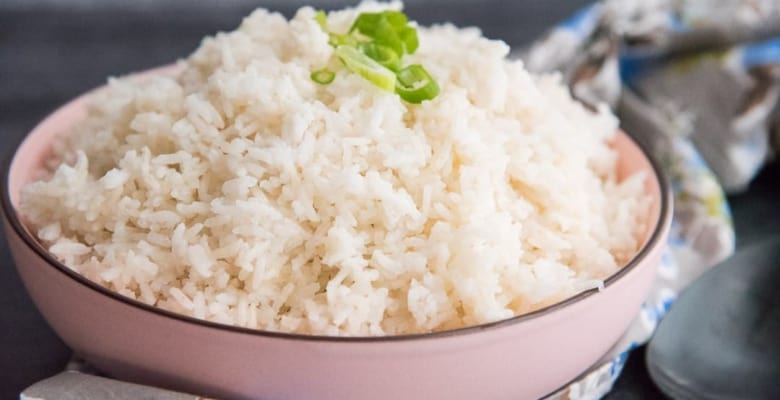
Arroz Blanco (Steamed White Rice)
at Sense & EdibilityEquipment
- 4 quart heavy pot
Ingredients
- 2 cups (420 grams) extra long grain rice
- 1 1/2 tablespoons 23 milliliters) extra virgin olive oil
- 2 cups (500 milliliters) cold water
- 1/2 teaspoon kosher salt optional
Instructions
Rinse the Rice Thoroughly
- Add the rice to a large mixing bowl and cover it with at least 4 inches of cold water. Use your fingers to agitate the water to remove the rice grains' starch.
- Carefully strain the water from the rice in the bowl and repeat this rinsing process 2 to 3 more times.Strain the water from the rice well and set it aside for now.
Toast the Grains of Rice
- Heat the extra-virgin olive oil over medium-high heat for 1 minute in a 4 to 6-quart heavy-bottomed pot. Add the rinsed and dried rice to the pot once the oil begins to shimmer.
- Use a wooden spoon to stir the rice into the olive oil and coat the grains while toasting them.The rice will take on a golden color and stick a little to the bottom of the pot.
- Scrape up the rice with your wooden spoon once more, then pour in the cold water. Give the rice another stir to incorporate the water into the rice.
- Season the rice with kosher salt after adding the water. Allow the water to come to a rapid boil once you stir in the salt. Continue boiling the water just until the grains of rice are visible, and the liquid is nearly evaporated in the pot.
Seal, then Steam the Rice
- Stir the rice in the pot once more. You will hear what sounds like rustling newspaper when you stir the rice at this point.Lay a piece of heavy-duty aluminum foil over the pot. Press the pot's lid down onto the foil firmly.
- Reduce the cooking temperature of the rice to low and allow the rice to steam for 20 to 25 minutes without removing the lid or stirring. Uncover the pot after the cooking time is up. The water will be completely evaporated, and little holes will have formed in the rice.
Fluff, the Serve the Rice
- Turn the heat off, but leave the pot on the stove. Use a spoon or a large fork to fluff the rice in the pot to break it up. The rice will be separated and fluffy once you move it around.
- Serve arroz blanco with your favorite beans or peas. You can also serve white rice with meats that have gravies. Serve it on its own, topped with sliced green onions and fried egg.
Notes
Swaps and Substitutions:
- You can replace long or extra-long white rice with basmati or jasmine rice without modifying this recipe.
- To replace the white rice in this recipe with brown rice, add additional 1/2 cup of water and increase the steaming time to 35 to 40 minutes. To use short grain or medium rice, reduce the cooking liquid by 1/4 cup and steam for 15-20 minutes. Both types of rice will benefit from 10 to 15 minutes of pre-soaking.
- You can replace the extra-virgin olive oil with vegetable oil, rendered bacon fat, or lard.
- Replace the water with chicken stock, seafood stock, beef stock, or ham stock.
- Replace the kosher salt with equal measurements of ground turmeric, sazón, Chicken Seasoning Blend, Mexican Spice Blend, Middle Eastern Spice Blend, or flavored salts like adobo, seafood seasoning, cajun spice, or smoked salts.
- You can add 1/4 teaspoon of black pepper to the rice along with the salt, as well.
Tips and Techniques:
- The excess starch, if not rinsed away, thickens the cooking water, which causes the rice to go gummy.
- Save the strained rice water for conditioning your hair, watering your plants, or as a liquid base for soups and stews.
- Sealing the rice pot with the foil between its lid creates an extremely tight seal that allows the rice to steam evenly and more efficiently inside the pot.
- If the rice in the pot is still firm, add a 1/4 cup of water, cover it with the lid and continue steaming the rice for another 10 minutes.
Storage Instructions:
- Store leftover white rice in a food storage container in the fridge for 5 to 7 days.
- To reheat arroz blanco, add a couple of tablespoons of water to its container. Microwave the rice on high for 2 minutes, stirring after a minute.
Freezer Instructions:
- Transfer the cooled rice to a freezer storage bag, pressing out any air, then seal the bag.
- Freeze the rice for up to 3 months.
- Thaw frozen rice in the refrigerator overnight, and reheat it in the microwave with a small amount of water.


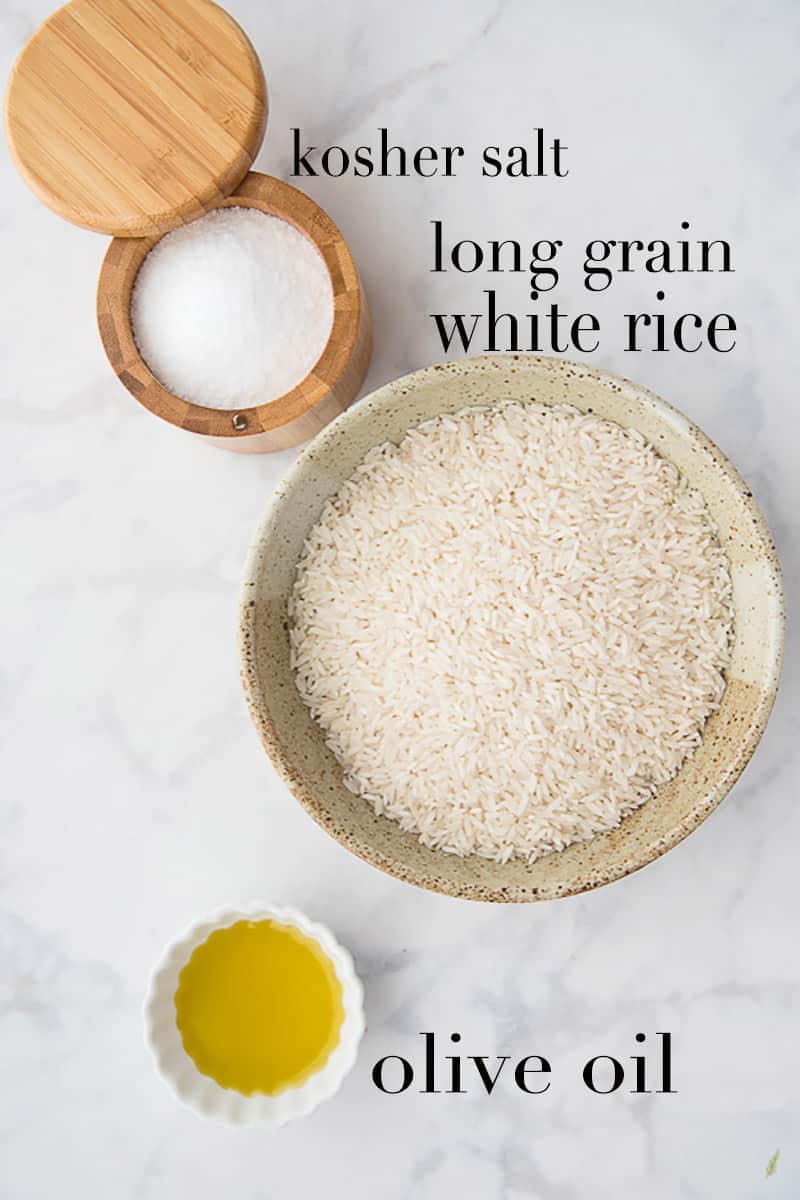
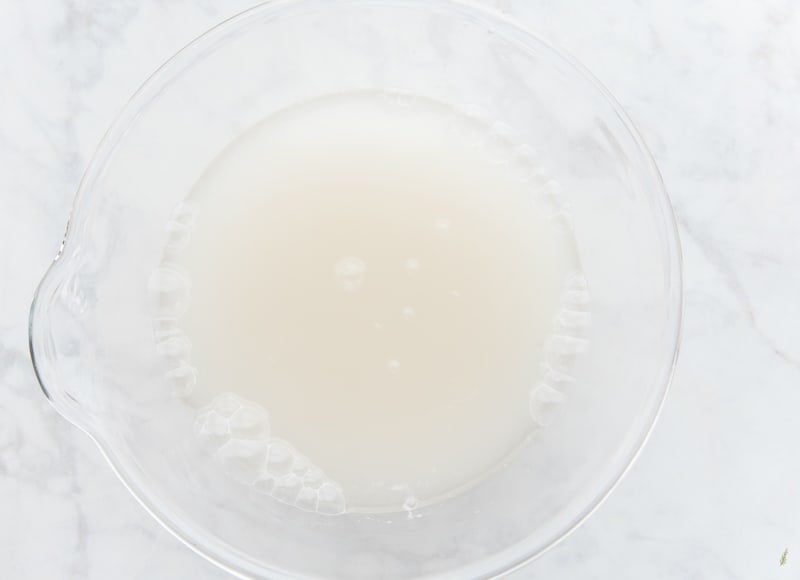
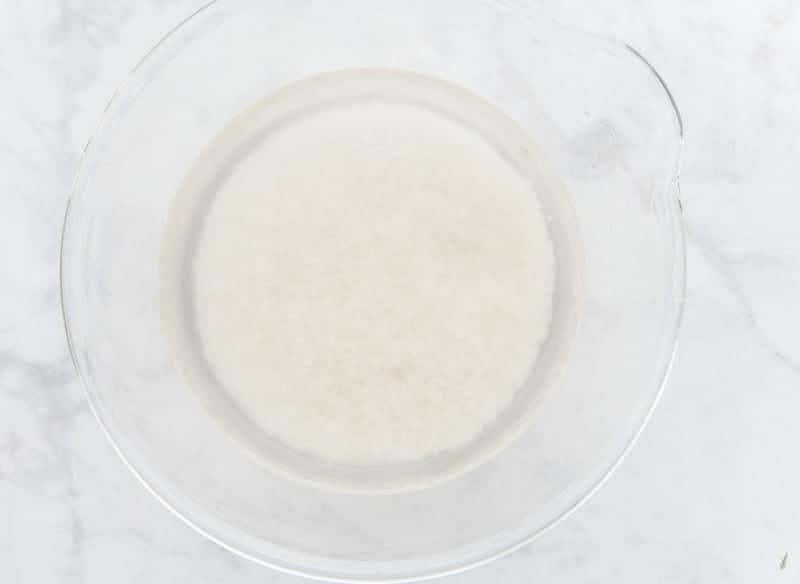
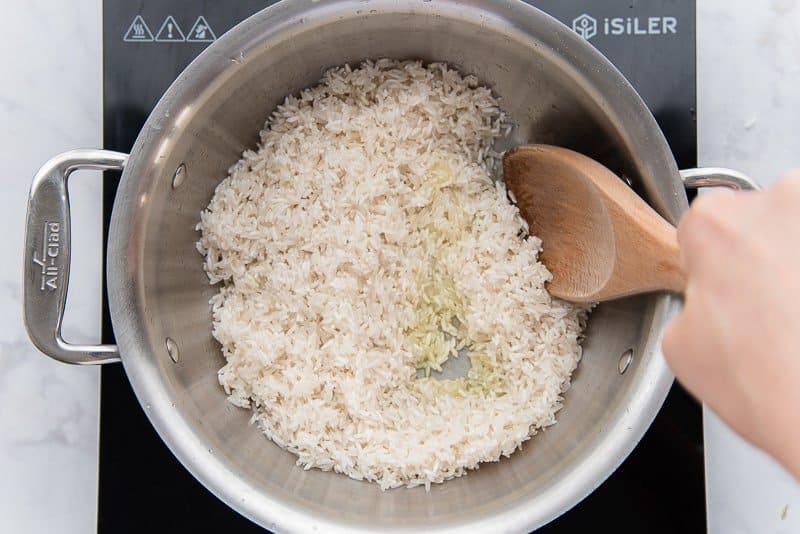
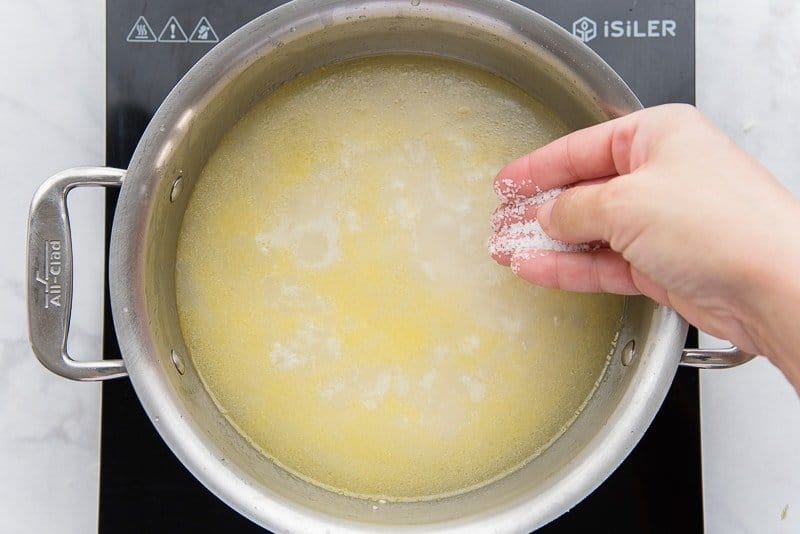
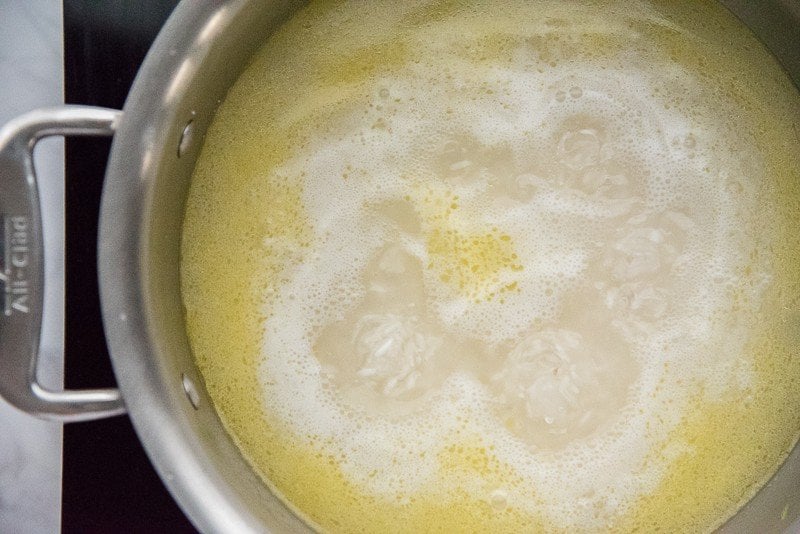
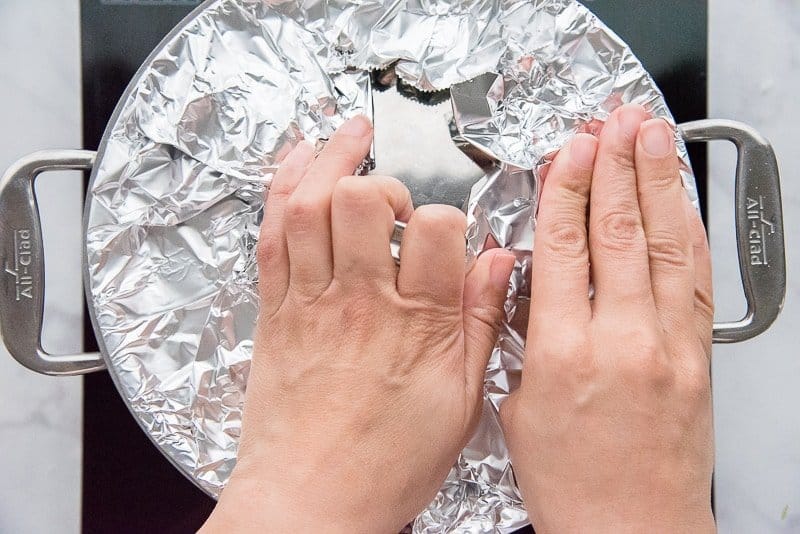
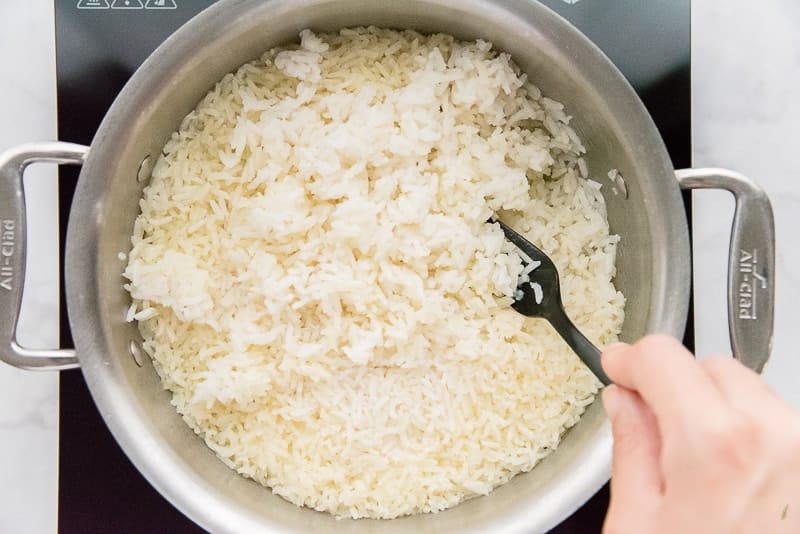
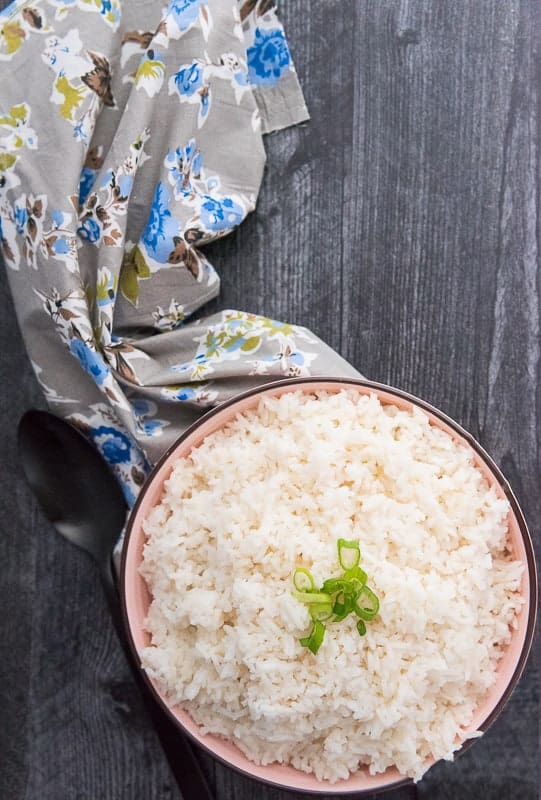
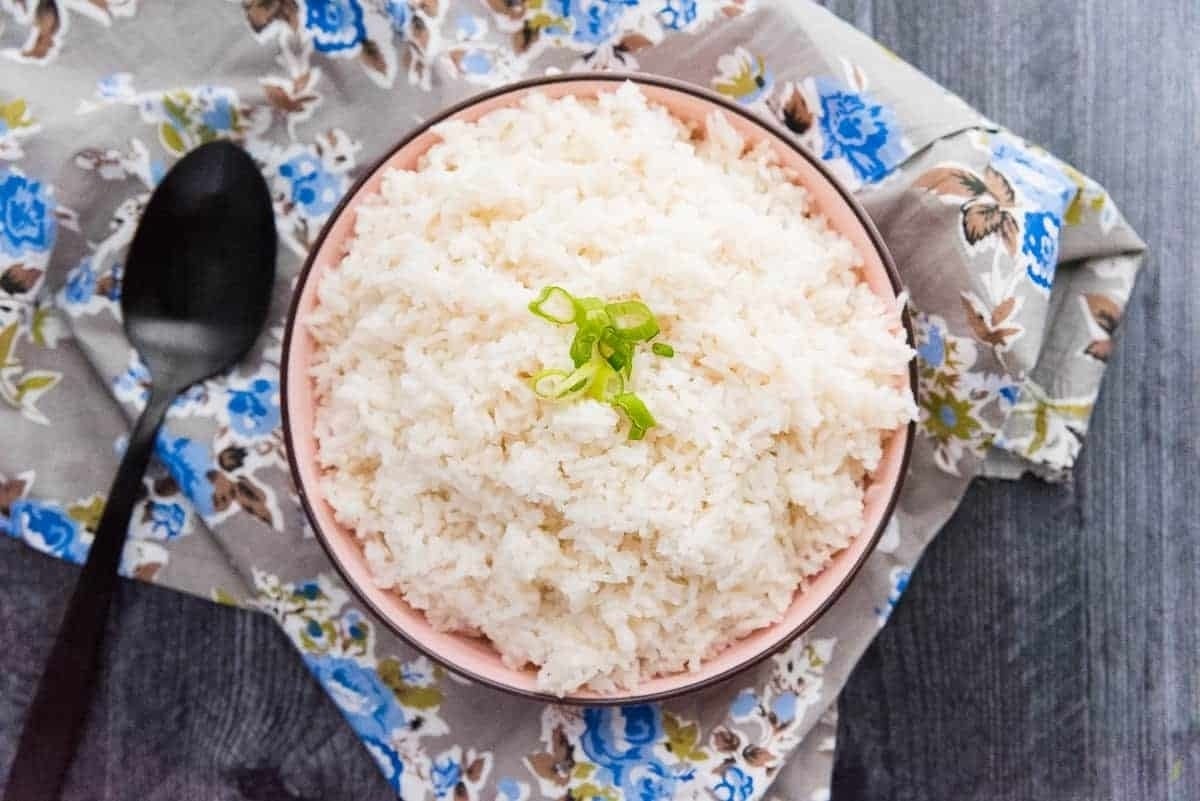
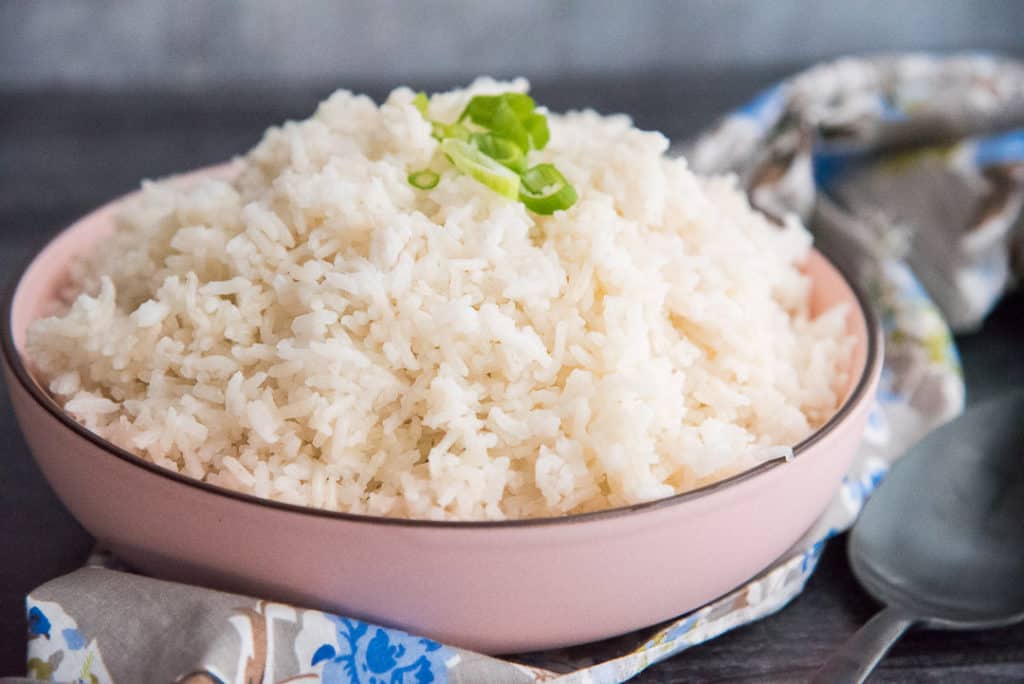


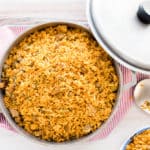


Hi Marta, I’m so impressed with your recipes! You are extremely talented. I tried your traditional coquito, your potato salad, and now your white rice recipes. You never disappoint! Thank you for your instructions and dedication to the culinary world!
Thank you so much, Melanie! It means a lot to me that you like the recipes.
White rice staple in Indian cooking too, and the method of cooking is almost similar. So agree with your mother, we always keep rice in our pantry.
So many cultures do, Hayley. We love it.
Made this today and served it with some salmon. Yummy!
That sounds delicious, Min!
This is the perfect recipe for white rice! It went really well with the fish I served tonight. Thanks for sharing your recipe.
You’re welcome, Dennis.
I love how easily you made this recipe for us, and I am so excited to make this for everyone!
Thanks, Amy!
Love the step by step! Such a great tutorial on steamed rice…thank you so much!
You’re welcome, Tammy.